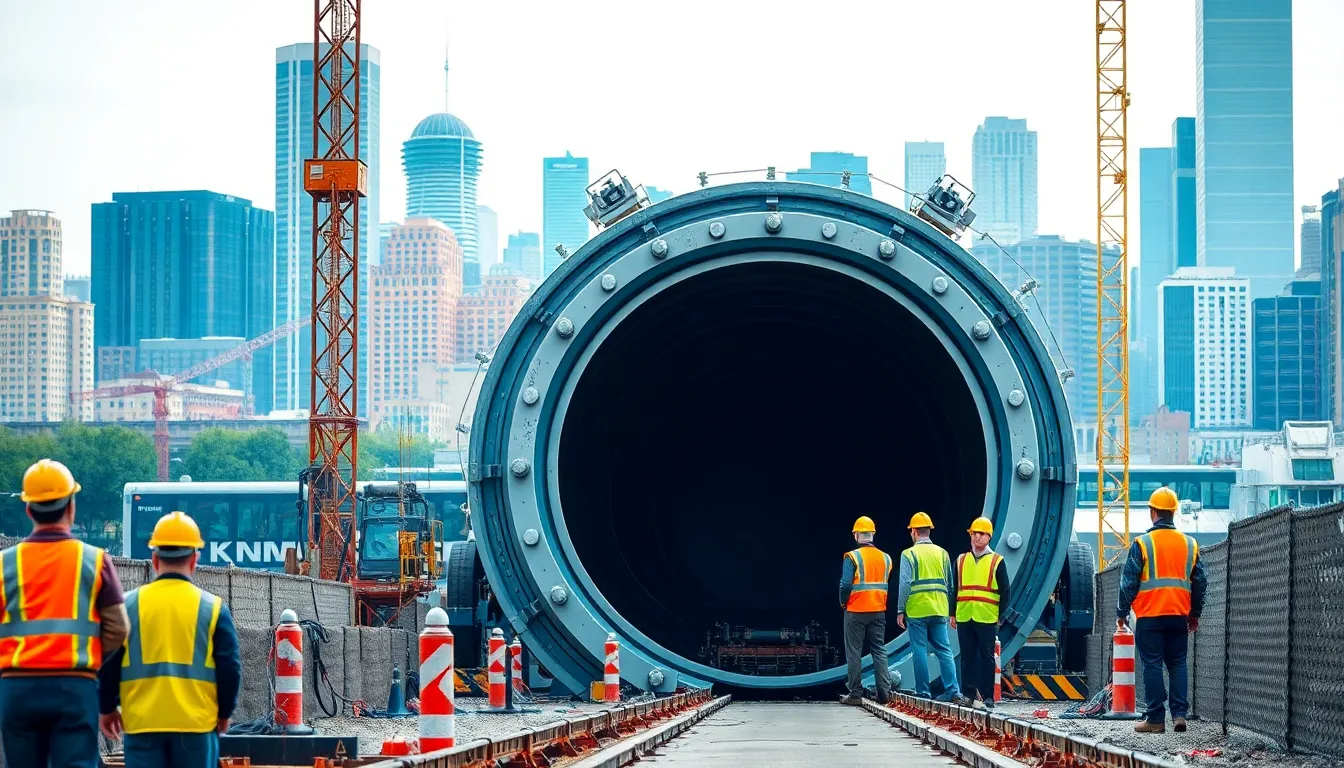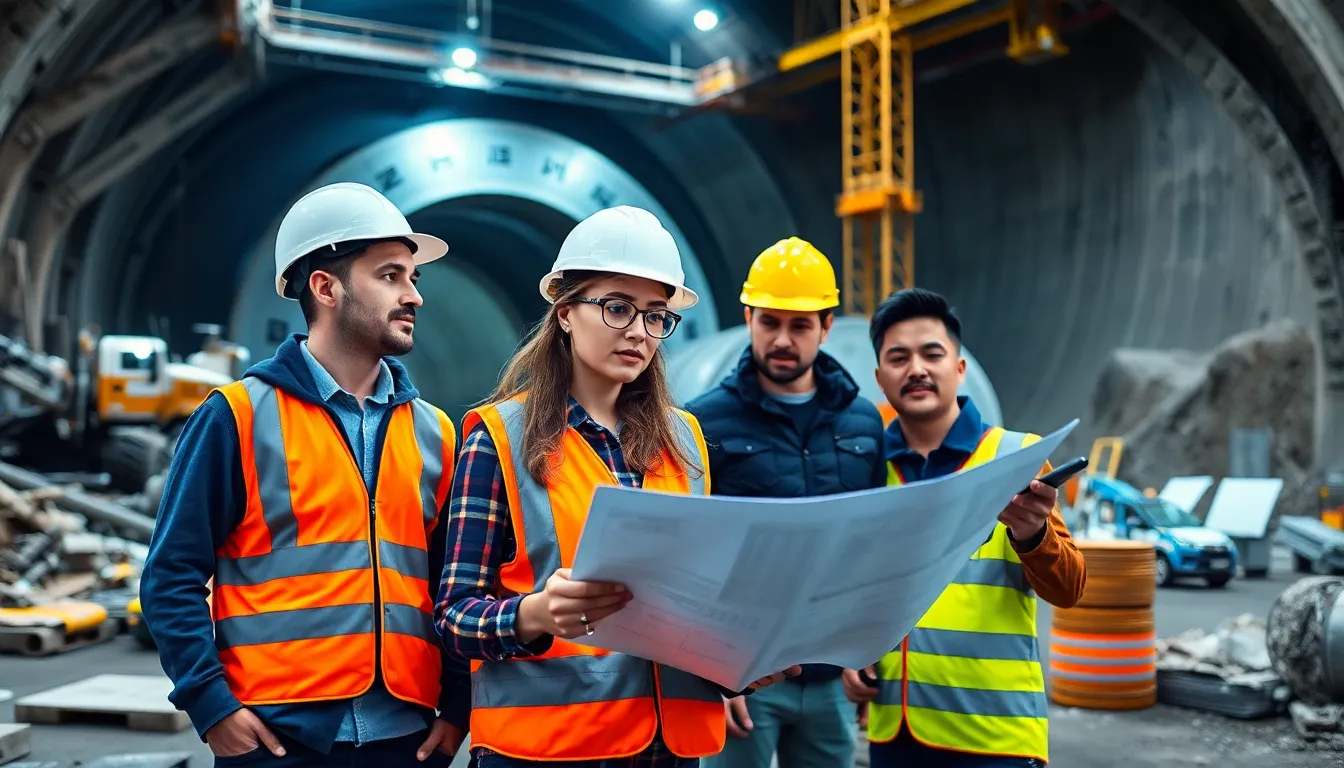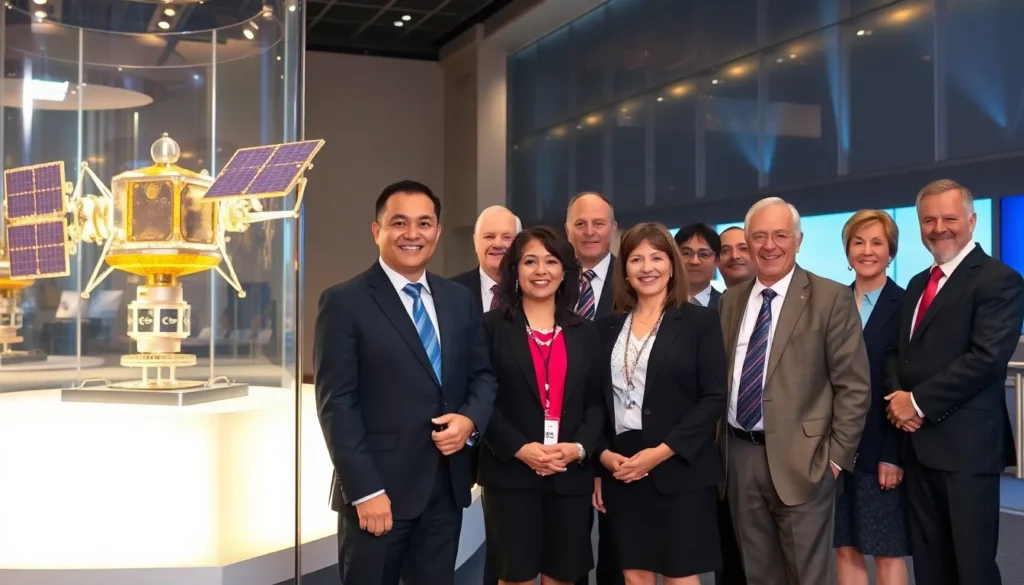Imagine a world where cities breathe underground, where the hustle and bustle of urban life takes a thrilling dive beneath the surface. Tunnelling and underground space technology aren’t just about digging holes; they’re about unlocking a treasure trove of possibilities. From efficient transportation networks to innovative storage solutions, this hidden realm is revolutionizing how we think about space.
Table of Contents
ToggleOverview of Tunnelling and Underground Space Technology
Tunnelling and underground space technology play vital roles in modern urban development. This technology encompasses various methods for creating tunnels, shafts, and subterranean spaces, facilitating infrastructure expansion and efficient use of space. Key techniques include boring, blasting, and cut-and-cover methods, which cater to different ground conditions and project requirements.
Innovative materials and machinery enhance tunnelling capabilities, allowing for safer and faster operations. Advancements in tunnel boring machines (TBMs) streamline excavation processes, enabling the construction of intricate underground networks. These networks often house public transit systems, utilities, and commercial spaces, significantly reducing surface congestion.
Underground spaces offer substantial benefits, such as environmental protection and energy efficiency. By utilizing subterranean areas, cities manage noise pollution and preserve green spaces above ground. These solutions align with sustainability goals, addressing urbanization challenges while promoting a cleaner environment.
The potential for underground development extends beyond urban areas. Rural applications, including transportation corridors and resource extraction, highlight the versatility of tunnelling technology. Businesses and governments increasingly invest in these methods to enhance infrastructure resiliency in changing climates.
Regulatory frameworks are adapting to facilitate underground construction. Safety standards and environmental assessments ensure responsible excavation practices. As cities prioritize underground advancements, the collaboration between engineers, urban planners, and environmentalists becomes essential for realizing these ambitious projects.
Importance of Tunnelling

Tunnelling plays a crucial role in advancing urban infrastructure. It enhances the efficiency of transportation systems while maximizing space utilization below ground.
Economic Benefits
Tunnelling projects contribute significantly to local economies by creating jobs and stimulating investment. Many cities experience reduced traffic congestion due to efficient underground transportation networks, which boosts productivity. Infrastructure improvements often lead to increased property values, providing long-term economic benefits. The construction and maintenance of underground facilities attract various businesses, enhancing city revenue. Moreover, governments save on surface infrastructure costs as underground systems alleviate the need for extensive road expansions.
Environmental Considerations
Underground spaces offer substantial environmental advantages. Noise pollution decreases as transportation occurs below ground, improving the quality of life for residents. Green spaces on the surface can be preserved, promoting biodiversity and enhancing urban aesthetics. Tunnelling minimizes land disruption, enabling more sustainable urban expansion. By integrating underground solutions, cities can effectively address challenges related to urbanization while adhering to sustainability goals. Innovations in excavation technologies reduce the carbon footprint of construction projects, aligning with broader environmental efforts.
Types of Tunnelling Techniques
Tunnelling techniques encompass various methods suited to specific project needs. These methods enhance the efficiency and sustainability of underground space utilization.
Conventional Tunnelling
Conventional tunnelling mainly employs methods like drilling and blasting. Blasting fractures rock for large-scale excavation. Excavators follow up with mucking, creating a reliable removal process for debris. Additional techniques such as the cut-and-cover approach allow for shallow tunnels. This method involves digging a trench, constructing the tunnel walls, and covering it back up, which is often less disruptive to surface structures. Despite its effectiveness, conventional tunnelling can be labor-intensive and increase noise pollution.
Modern Tunnelling Methods
Modern tunnelling methods increasingly utilize advanced technologies like tunnel boring machines (TBMs). These machines enhance precision and efficiency, allowing for the excavation of complex tunnel shapes. Also, Earth Pressure Balance (EPB) shields mitigate ground movements during construction, minimizing surface disruptions. The use of segmental lining systems provides immediate structural support, enhancing safety. Innovations in materials strengthen the durability of tunnels, ensuring longevity. Increased automation in modern systems leads to faster project completion and lower labor costs.
Applications of Underground Space Technology
Underground space technology finds numerous applications across various sectors. Its versatility transforms urban landscapes while addressing modern challenges.
Transportation Infrastructure
Transportation infrastructure heavily relies on underground space technology. Cities utilize tunnels for subways and railways to enhance connectivity. These systems alleviate surface traffic congestion and reduce travel times. Moreover, underground roads permit efficient movement of goods and people, supporting rapid urban growth. Advanced tunnelling methods streamline construction, ensuring timely project delivery. As a result, locations experience boosted economic activity and improved accessibility.
Urban Development
Urban development thrives on the opportunities presented by underground spaces. Developers integrate underground utilities such as water, electricity, and telecommunications to maximize surface land use. This strategy preserves green spaces and mitigates environmental impact. Additionally, underground commercial spaces promote mixed-use developments, attracting businesses and residents alike. Innovative designs for subterranean parks and recreational areas further enhance urban living. Overall, these developments create sustainable, livable cities that adapt to growing populations.
Energy Storage Solutions
Energy storage solutions benefit significantly from underground space technology. Below ground facilities provide secure environments for battery storage, enhancing grid stability. Such spaces facilitate the storage of renewable energy sources, minimizing waste during peak production periods. Operators can implement pumped hydro storage in deep tunnels, allowing for efficient energy management. As cities move towards sustainability, underground energy solutions rise in importance, supporting clean energy initiatives. With increased demand for reliable energy sources, these technologies play a vital role in shaping future infrastructure.
Challenges in Tunnelling
Tunnelling projects face numerous challenges that can impede progress. These challenges often stem from both technical difficulties and regulatory issues.
Technical Difficulties
Technical difficulties in tunnelling arise from geological variances. Unexpected ground conditions may include rock formations and water table fluctuations. Engineers need to address these conditions with tailored solutions that ensure safety and efficiency. Tunnel boring machines (TBMs) might struggle in unstable soil, requiring constant adjustments. Moreover, managing ventilation inside tunnels becomes critical as more complex structures emerge. High-pressure groundwater issues can create delays and necessitate additional pumping systems. Finally, construction noise represents a challenge, as operators must balance efficiency with community concerns.
Regulatory Issues
Regulatory issues pose significant challenges in the tunnelling sector. Compliance with local, state, and federal regulations requires meticulous planning. Approval processes often involve extensive environmental impact assessments to ensure sustainability. Engaging with community stakeholders can lead to delays, as public opinion significantly influences project execution. Zoning laws may impose restrictions on tunnel routes, shaping design and feasibility. Compliance with safety standards, especially concerning worker health, becomes paramount as projects progress. Adhering to these regulations not only influences timelines but also impacts project costs and overall feasibility.
Future Trends in Tunnelling and Underground Space Technology
Innovative materials are emerging in tunnelling projects. Smart concrete and carbon fiber composites enhance structural integrity while minimizing weight. These materials support lighter designs and quicker construction processes.
Automation is increasingly shaping the future of tunnelling. Advances in artificial intelligence enable the use of autonomous tunnel boring machines that speed up excavation. Increased efficiency leads to reduced costs and minimized labor requirements.
Data analytics plays a crucial role in modern tunnelling operations. Sensors and IoT devices collect real-time data, allowing for proactive management of potential issues. These technologies improve safety and reduce downtime.
Sustainability continues to be a driving factor in underground development. Green tunnelling methods aim to reduce carbon footprints further, prioritizing energy-efficient equipment and materials. Environmental considerations lead to wider acceptance of underground projects.
Collaboration among various disciplines is becoming essential. Engineers, urban planners, and environmentalists must work in unison to develop comprehensive strategies for underground projects. This teamwork fosters innovative solutions that address multiple urban challenges simultaneously.
Regulatory frameworks are evolving to keep pace with technological advancements. Local, state, and federal regulations are adapting to accommodate new tunnelling methods. Streamlined processes facilitate faster project approvals and promote responsible practices.
Globalization presents opportunities for collaboration across borders. International partnerships enable knowledge sharing and leverage best practices in tunnelling projects. Networking enhances innovation and accelerates project implementation.
Long-term planning is critical for future developments in underground space technology. Urban planners must factor in population growth and evolving transportation needs. Strategic visions for integrated underground systems will support sustainable urban growth.
Tunnelling and underground space technology are reshaping urban landscapes in remarkable ways. As cities face increasing challenges related to population growth and environmental sustainability, these technologies provide innovative solutions that enhance urban living.
The integration of advanced methods and materials is paving the way for safer and more efficient underground projects. By prioritizing collaboration among stakeholders and embracing emerging technologies, cities can unlock the full potential of their subterranean spaces.
With a focus on sustainability and economic growth, the future of tunnelling holds promise for creating more resilient and adaptable urban environments. The journey towards smarter cities is just beginning, and underground solutions will play a crucial role in that evolution.




